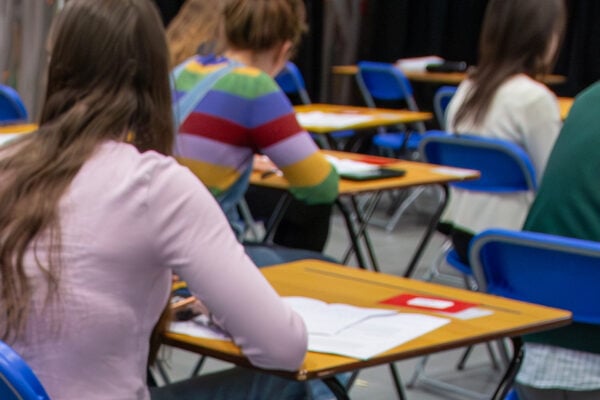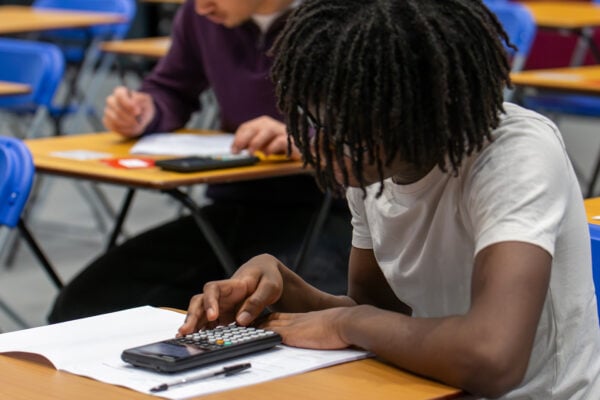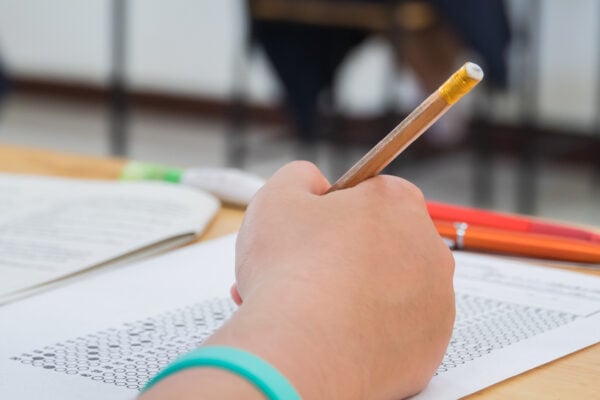How the right GCSE maths calculator can help
students succeed

GCSE maths revision and exam preparation is one of the most important phases in any student’s education, and a testing time for teachers.
You have a lot to think about when preparing your learners for this crucial milestone, from teaching the fundamentals of the mathematics syllabus to readying students for the demands of exam questions.
One thing you should have absolute confidence in is the range of tools available to support learning. That’s where Casio can offer support through information and advice on your calculator options, as well as access to resources that help you get the best out of the technology.
How to find the best calculator for GCSE maths students
To find the most effective calculator to meet your students’ needs and enhance their learning, first you need to know what options are available and how they compare with each other.

Run a calculator comparison
It’s a good idea to do a detailed comparison of particular calculator models, so you can build a clear picture of what they’re capable of and the most significant differences between them.
Doing a comparison on the Casio website will give you an in-depth rundown of the technical specifications of our fx-83GT CW, fx-85GT CW and fx-991CW models, for example. A scientific calculator is a fundamental requirement for GCSE maths, so it’s important to know the basic functionalities of these devices, what each model is capable of and their practical applications in your lessons.

Do a trial run
Understandably, many GCSE maths teachers want to give particular calculators a try before adopting them and introducing them in lessons. That’s why Casio offers loan sets of some models, so schools have a chance to test them out and explore their basic functionalities ahead of a full purchase.

How calculators enhance GCSE maths learning
Calculators serve a clear purpose for GCSE mathematics students. They’re invaluable when it comes to performing complex calculations, answer checking and navigating tricky concepts such as trigonometric functions and equations.
However, they can also serve a broader purpose related to levels of engagement in lessons and giving students the freedom to explore mathematical problems and topics under their own steam.

Autonomy and exploration
Teachers will always have the most important role to play when it comes to planning and leading lessons, introducing students to key topics and helping them prepare for exams.
One of the main advantages of a scientific calculator at GCSE level is that it
complements this teacher-led learning with the opportunity for self-driven,
autonomous exploration on the student’s part.
When they have instant, easy access to a powerful learning tool in the palm of their
hands, GCSE maths students can ask their own questions, analyse the answers and pursue any lines of inquiry that capture their interest. This contributes to deeper
understanding, enthusiasm for the subject and an appreciation of the fact that, in
mathematics, everything is connected.
This can be particularly evident for students operating at greater depth at GCSE,
who are experimenting with graphic calculator functionality in preparation for
moving up to A-level.
In the words of maths expert Simon May: “There’s nothing wrong with students
putting something into their calculator and asking, ‘what does it look like as a graph,
and why does it look like that?’ That opens up a world of possibilities that they can
discuss.”

Stronger classroom engagement
Calculators – and related tools and software – can provide a useful focal point for lessons and a valuable contribution to student engagement and collaboration.
Casio provides emulator software that allows teachers to display a calculator screen to an entire class, making it much easier for you to guide your students through the functions and calculations they need to know. Being able to present key points to the entire group at once can be a major time-saver – something we know every teacher will appreciate.
We’ve also expanded the range of software solutions on offer to teachers with the launch of ClassPad, an online teaching and learning environment that goes above and beyond the capabilities of a standard emulator.
ClassPad is a powerful resource, offering a number of features that can boost classroom engagement and improve understanding. For example, as well as inbuilt emulators for all models in the ClassWiz scientific calculator range, it provides graphing and shape-drawing capabilities that add an extra visual dimension to the topics you’re exploring.

Speed and efficiency in GCSE maths exams
As well as hammering home the fundamentals of the syllabus and steadily building learners’ understanding and confidence, a big responsibility for Key Stage 4 teachers is preparing students to sit their GCSE maths exams.
We’ve spoken to many educators about the methods they have found useful, including regularly running through past papers and showing their classes different exam question formats.
But when the time comes for students to sit their exams, they must be able to work under pressure, manage their time efficiently and make the best possible use of the tools available to them.
This is where all the time they have spent working with their calculator and learning how to use it quickly really pays off. Students who are completely comfortable with their calculator – to the point that they can access key functions and execute calculations almost without even thinking about it – will be well set to thrive in their exams.
Casio’s ClassWiz scientific calculator range has been redesigned with simplicity, accessibility and ease of use in mind. Improvements including the addition of a menu structure make calculators like the fx-991 CW clearer and more intuitive to navigate. The time and efficiency gains enabled by changes like this can prove just as
beneficial for teachers leading classes as for students sitting GCSE maths exams.
Find out more about Casio’s range of scientific and graphic calculators.
Blog
- Graphing technology
- Scientific calculators
- Exams
- Curriculum
- Classroom
- Students





















